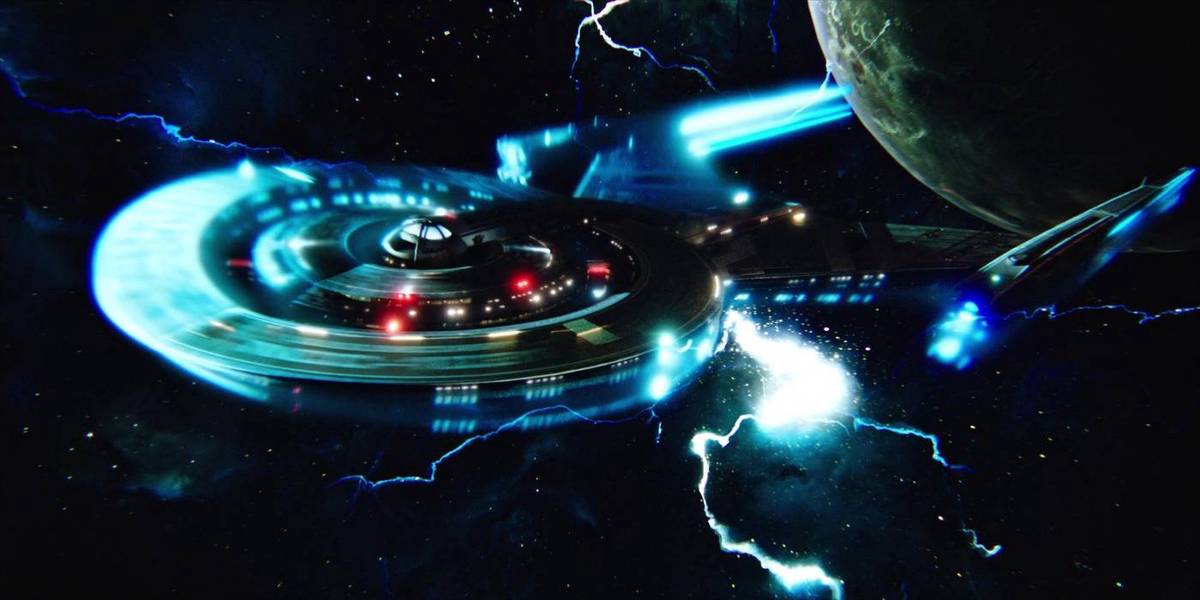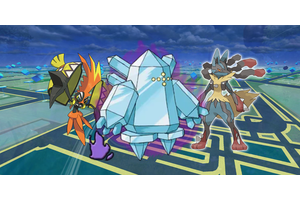My Star Trek: Discovery Theory Can Explain How Voyager Got Lost In The Delta Quadrant
I have a Star Trek: Discovery theory that can explain how the USS Voyager got lost in the Delta Quadrant in the first place. To make Star Trek: Voyager's unique premise work, Captain Kathryn Janeway's (Kate Mulgrew) USS Voyager crew had to actually get to the other side of Star Trek's galaxy with unprecedented speed. Voyager's premiere episode, "Caretaker", handwaves Voyager's nearly instantaneous travel with the Caretaker's (Basil Langton) "methods beyond your comprehension". The Caretaker seems humanoid, but that's a holographic cover for the "sporocystian life signs" detected on the Caretaker's array, suggesting the Caretaker is a sentient fungus.
22 years after Star Trek: Voyager's premiere, Star Trek: Discovery debuts as a new Star Trek show set 115 years before the USS Voyager's fateful first voyage. The USS Discovery is one of two Starfleet vessels outfitted with a spore drive—a never-before-seen experimental system designed by Discovery's Paul Stamets (Anthony Rapp). The USS Discovery's spore drive instantaneously transports the starship through the mycelial network, which connects points in the multiverse via the subspace root system of the Prototaxites stellaviatori fungus. One drawback is that the spore drive needs a sentient navigator to guide the starship along the sprawling network.
I Think The USS Voyager Got To The Delta Quadrant Through Star Trek: Discovery's Mycelial Network
Voyager's Caretaker Is A Fungal "Sporocystian Lifeform"
I think Star Trek: Voyager's Caretaker used Star Trek: Discovery's mycelial network to bring the USS Voyager to the Delta Quadrant in record time. Both the Caretaker and the USS Discovery's spore drive are able to move starships across the galaxy almost instantaneously. The USS Discovery needs the spores from P. stellaviatori to access the mycelial network, but the Caretaker might be able to access the mycelial network naturally as a sporocystian fungal lifeform. The Caretaker's true form is a luminous mass that reminds me of the environment inside the mycelial network in Star Trek: Discovery season 2.
The spore drive took the USS Discovery across 51,450 light-years in Star Trek: Discovery season 2, episode 2, "New Eden", and the Caretaker brought the USS Voyager across 70,000 light-years in Star Trek: Voyager's premiere.
Star Trek: Discovery's Black Alert jumps through the mycelial network are taxing on the ship and its navigator, which is also the case for Star Trek: Voyager's Caretaker, who is dying and has very little energy to spare. The quick journey leaves the USS Voyager and Commander Chakotay's (Robert Beltran) Maquis ship broken, with both ships suffering casualties. Longer jumps in Discovery mean less chance of navigating the mycelial network precisely, and the Caretaker tells Janeway it's even harder to send the USS Voyager back than to bring them to the Delta Quadrant in the first place.
Star Trek: Discovery's Spore Drive Was Classified To Protect Star Trek Canon
If Voyager Used The Mycelial Network, It Couldn't Have Been Intentional
Everything about the USS Discovery was classified at the end of Star Trek: Discovery season 2, which creates an in-universe reason — no one knows about the USS Discovery's spore drive in Star Trek: Voyager's 24th century. Before the USS Voyager is pulled into the Delta Quadrant by the Caretaker, the crew's only warning is a displacement wave headed their way. Without knowing about the USS Discovery's spore drive, or the mycelial network, there's no way Voyager's crew could predict that this displacement wave might be associated with the mycelial plane, or use it to get back home.

Why Starfleet Didn't Remake Discovery's Spore Drive In Star Trek: The Original Series & TNG
Star Trek: Discovery introduced the revolutionary spore drive technology, but here's why Starfleet abandoned and didn't try to recreate it.
From a production standpoint, there's no way that Star Trek: Voyager could have intentionally used the mycelial network from Star Trek: Discovery because Star Trek: Voyager's premiere predates Discovery's by 22 years. When "Caretaker" aired, Star Trek hadn't actually invented the galactic mycelial network. It is possible, however, Star Trek could have incorporated the work of real-life mycologist Paul Stamets into developing the idea for Star Trek: Discovery's spore drive after seeing how Star Trek: Voyager used a fungus-based lifeform to bring the USS Voyager 70,000 light-years across the galaxy.

Star Trek: Discovery
- Release Date
- 2017 - 2024-00-00
- Showrunner
- Alex Kurtzman
- Directors
- Olatunde Osunsanmi, Jonathan Frakes
- Writers
- Alex Kurtzman, Bryan Fuller
- Franchise(s)
- Star Trek
Cast
See All
 Rekha Sharma
Rekha Sharma
Star Trek: Discovery is an entry in the legendary Sci-Fi franchise, set ten years before the original Star Trek series events. The show centers around Commander Michael Burnham, assigned to the USS Discovery, where the crew attempts to prevent a Klingon war while traveling through the vast reaches of space.

Your comment has not been saved
Star Trek: Voyager
- Release Date
- January 16, 1995
- Network
- UPN
- Showrunner
- Michael Piller, Jeri Taylor, Brannon Braga, Kenneth Biller
- Directors
- David Livingston, Winrich Kolbe, Allan Kroeker, Michael Vejar
- Writers
- Rick Berman, Michael Piller, Jeri Taylor
Cast
See All Kathryn Janeway
Kathryn Janeway Robert BeltranChakotay
Robert BeltranChakotay
In this sci-fi series, the starship Voyager becomes stranded in the Delta Quadrant, 70,000 light-years from Earth. The diverse crew, led by Captain Janeway, embarks on a perilous journey home, encountering unfamiliar species and challenges while adhering to Federation principles in uncharted space.











Your comment has not been saved